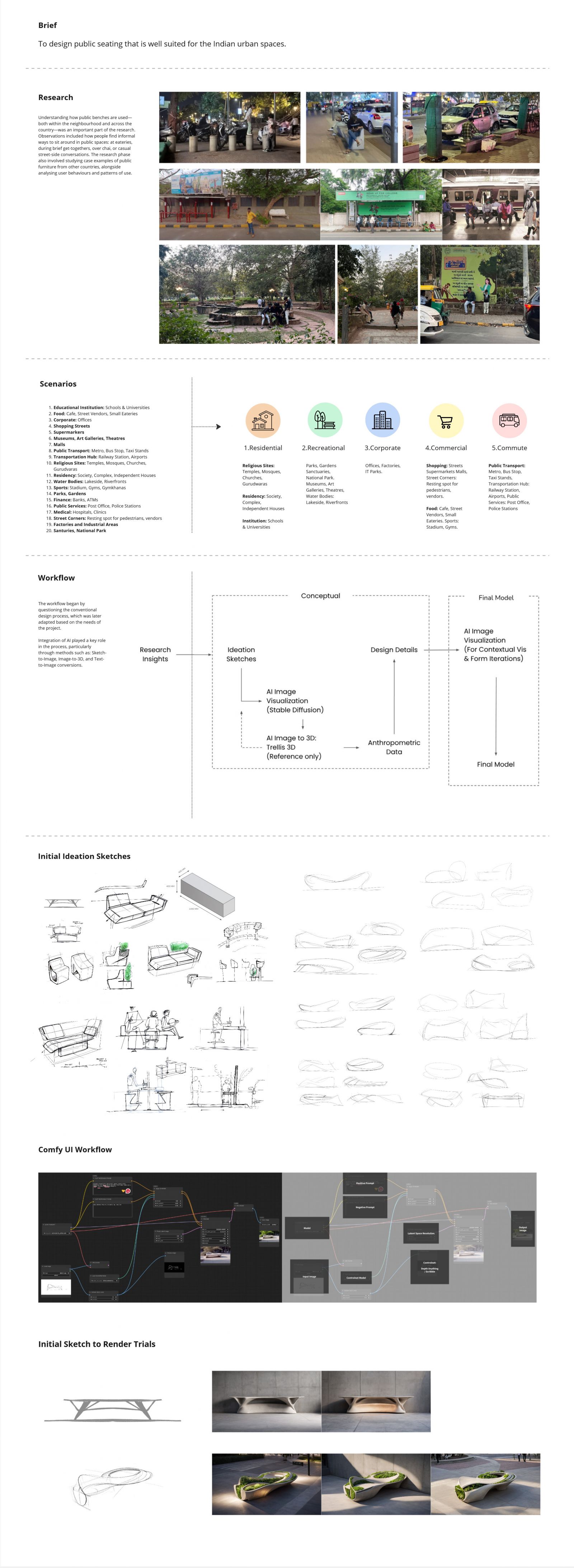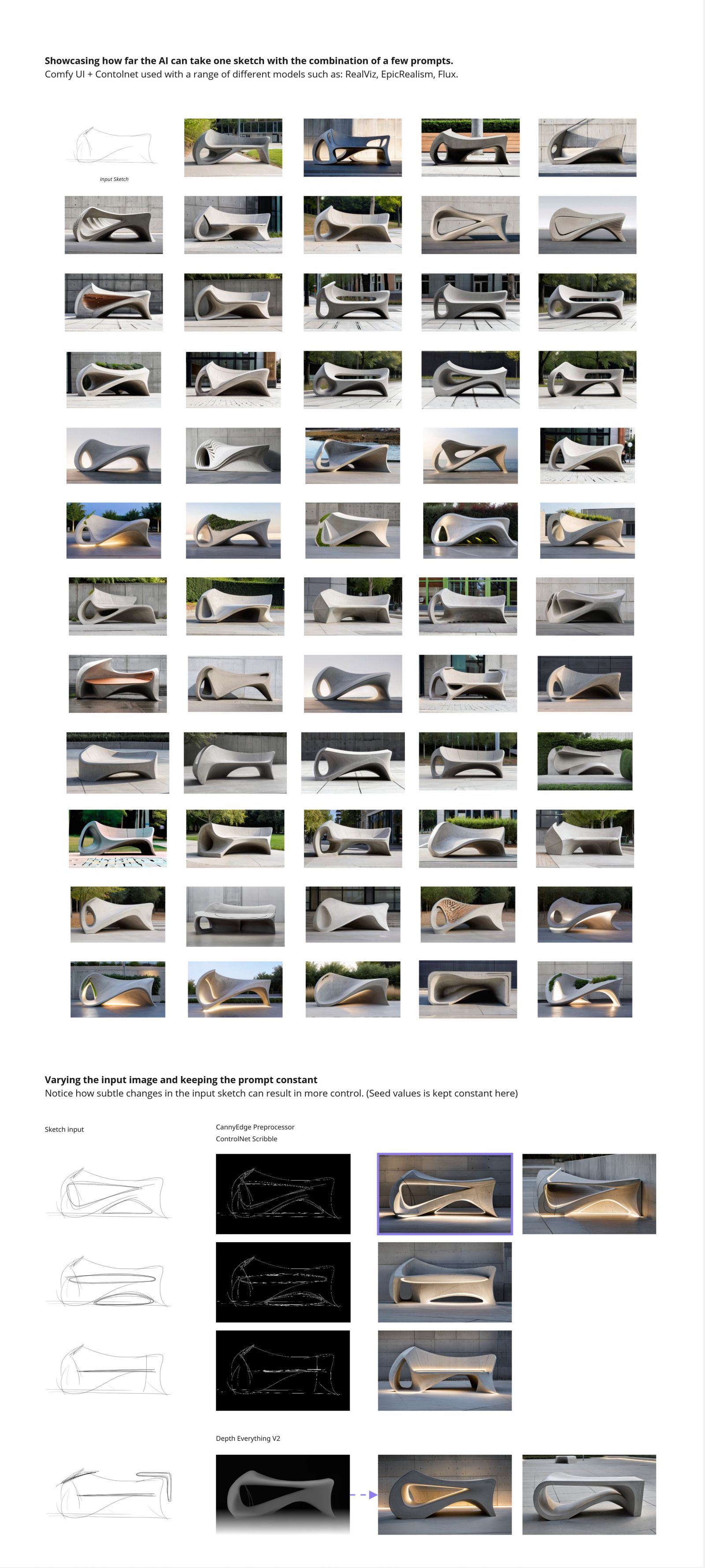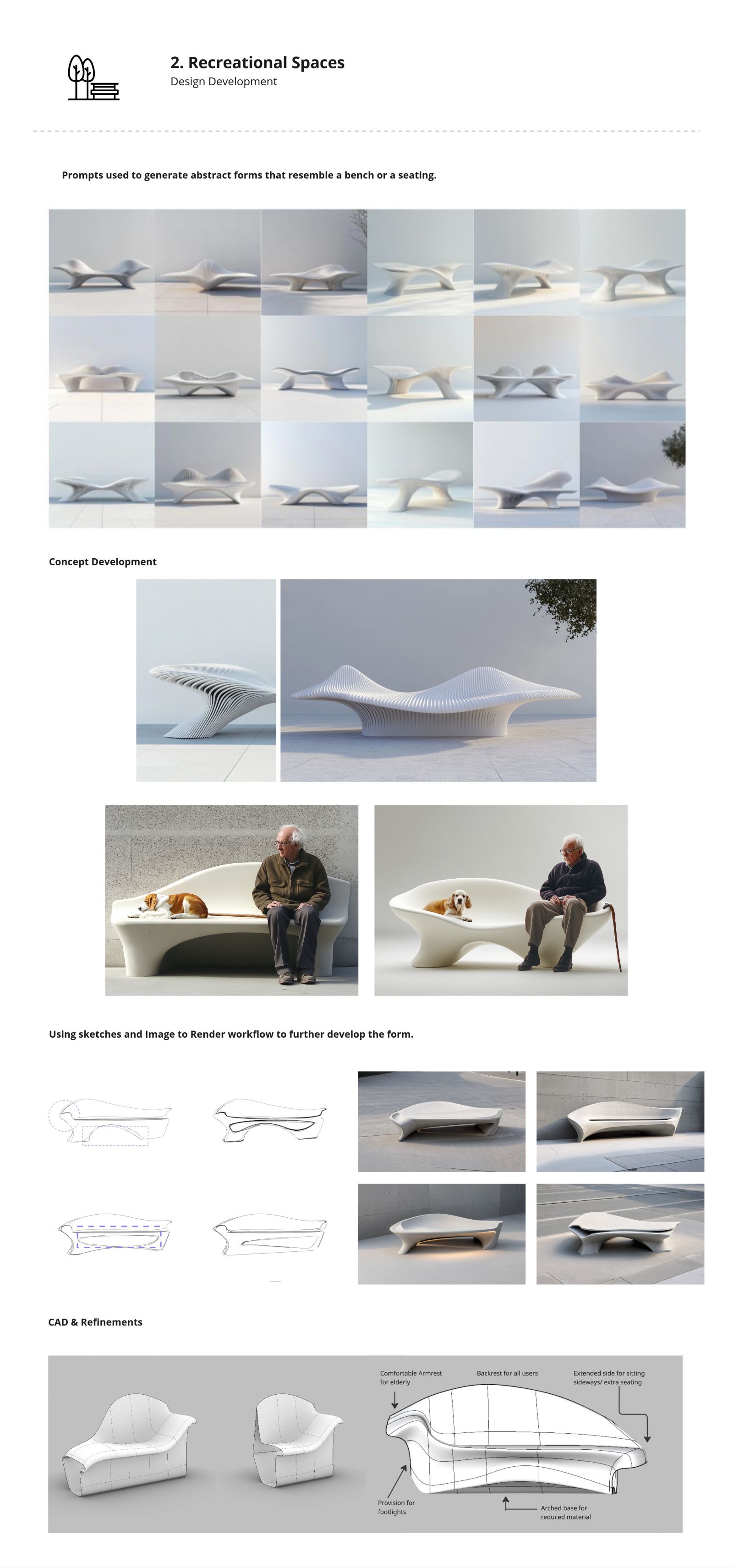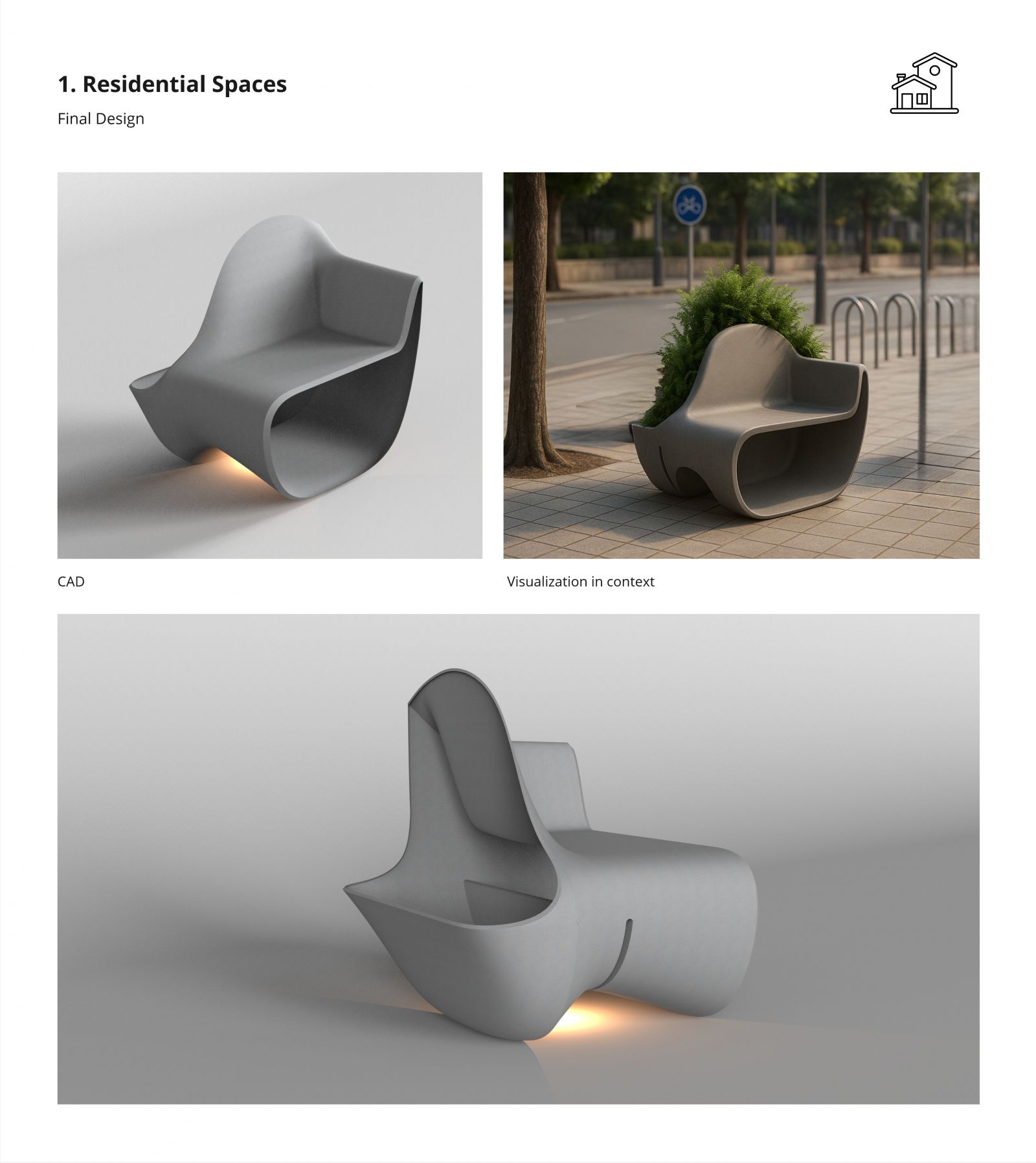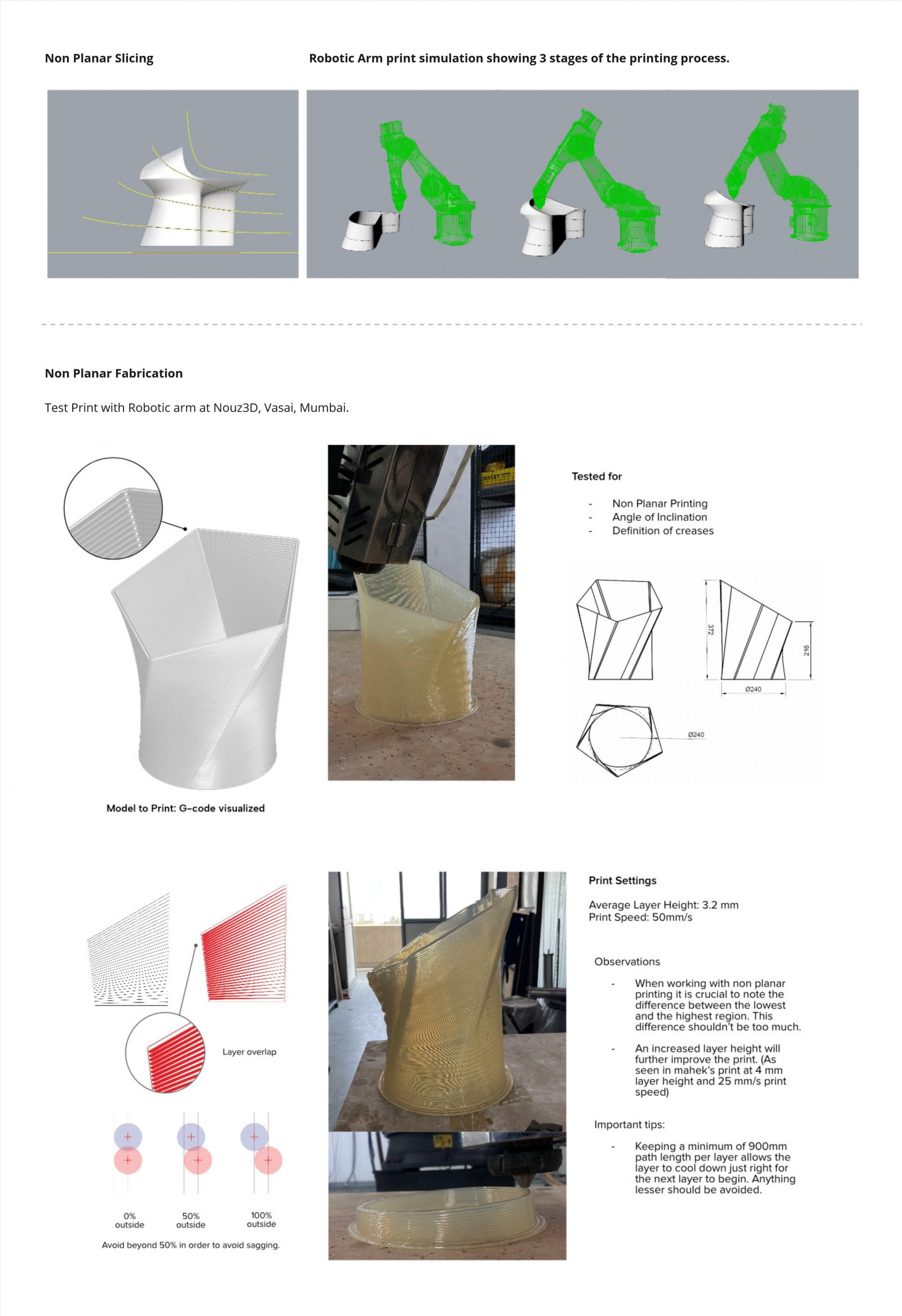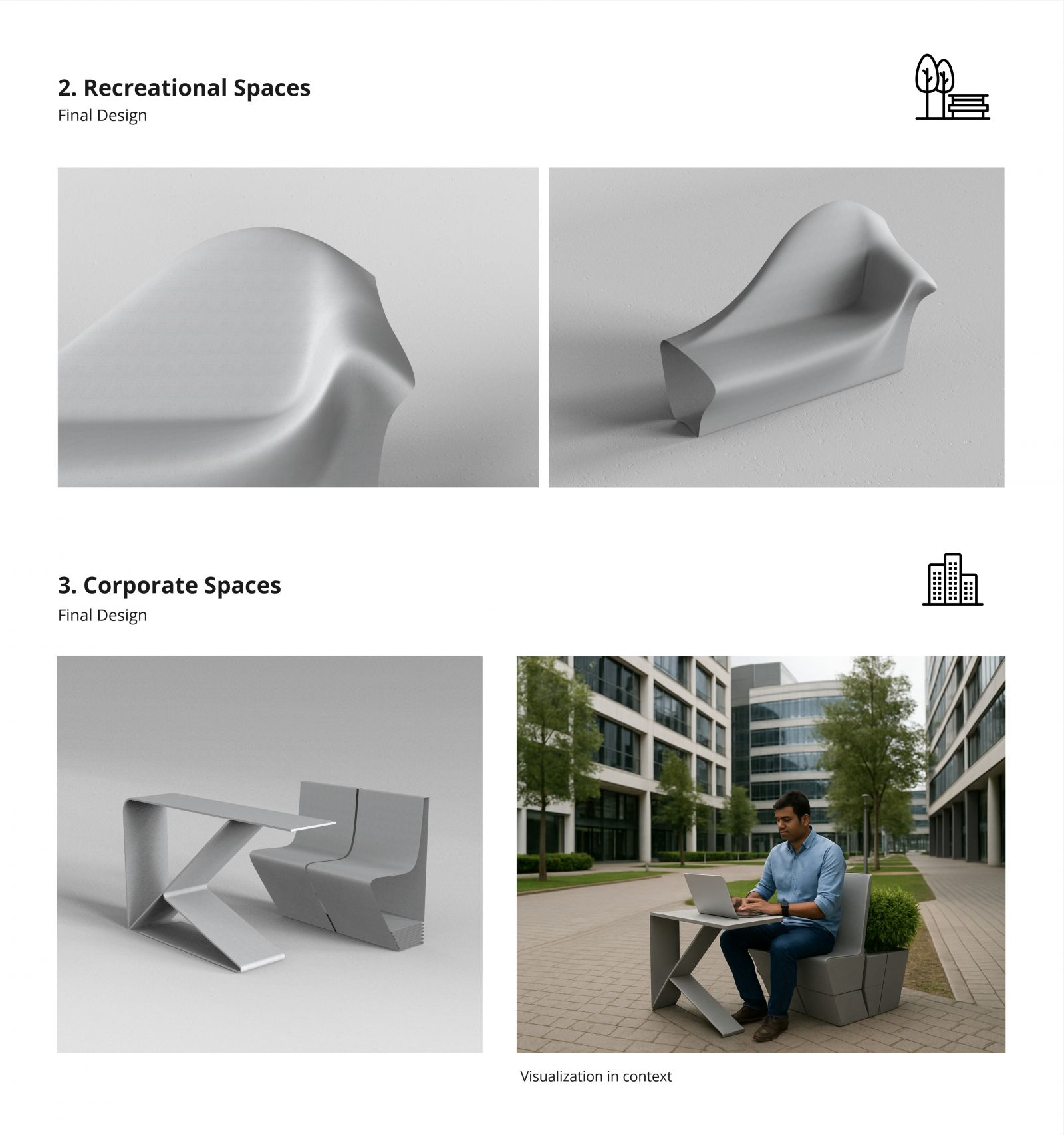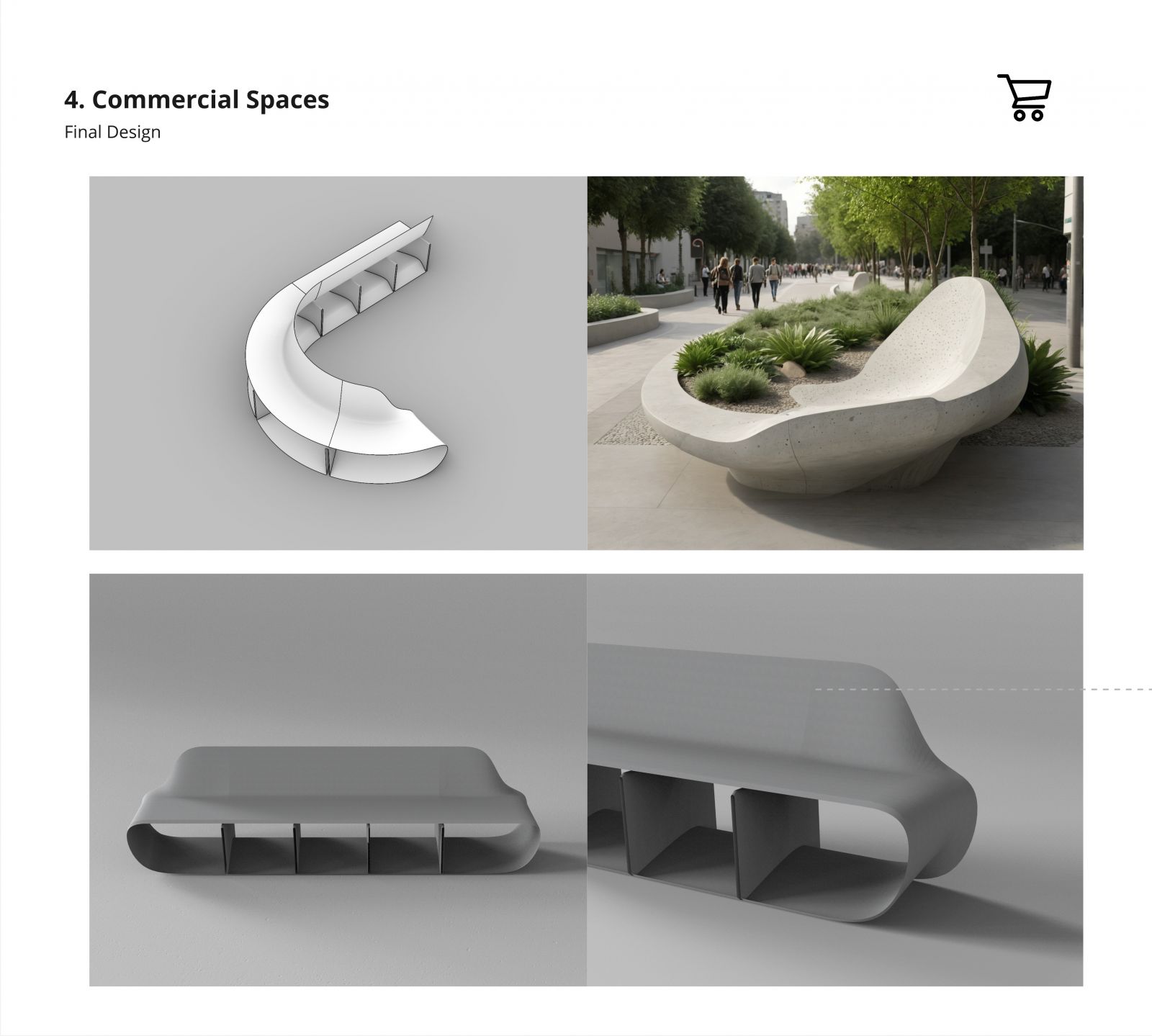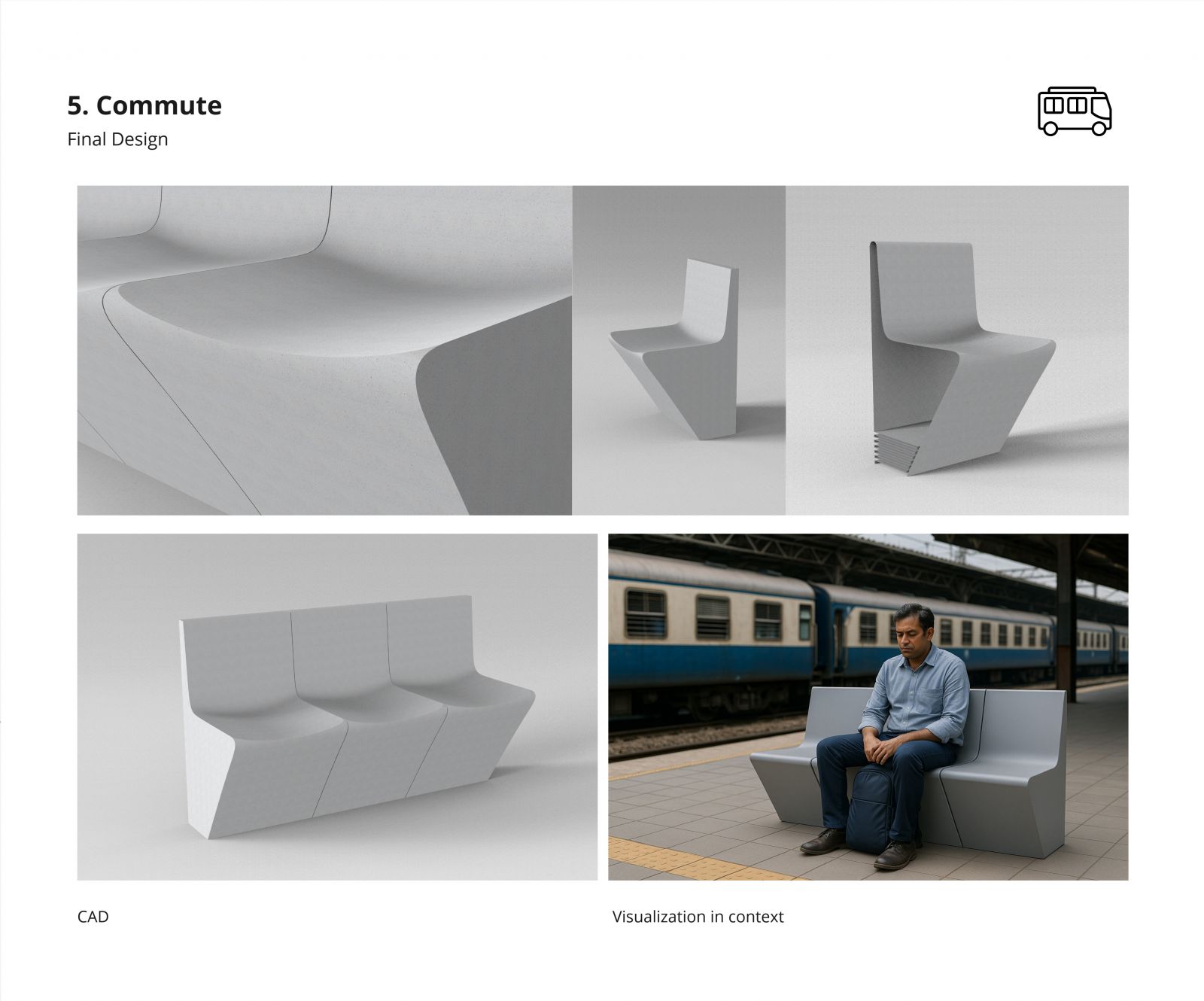Your browser is out-of-date!
For a richer surfing experience on our website, please update your browser. Update my browser now!
For a richer surfing experience on our website, please update your browser. Update my browser now!
I was particularly interested in exploring the ways in which a computational approach can be used in a real world brief that follows a traditional design process.
In my day to day observations, I noticed that public spaces are not given much thought.
Being in CEPT, I understood there's much more to urban spaces - Urban Planning and Urban Design are vast fields that are actively shaping our cities. Even in the most well designed corners, the furniture - just like in our interior spaces, in public spaces too plays a very critical role.
What makes a public furniture apt for Indian cities? Why are there so many issues with inclusivity in our public infrastructure? I can't imagine moving around with a wheel chair, baby stroller, briefcase, a cycle or even walking stick. Moreover, the urban furniture doesn't consider many more scenarios. It doesn't have to be the way it is. I felt a strong need to look for solutions and thus, began this project "The design of public seating for Indian urban spaces".
The project went about with identifying five scenarios for which I used a computation driven design approach to reach solutions that can be produced by digital fabrication techniques.
